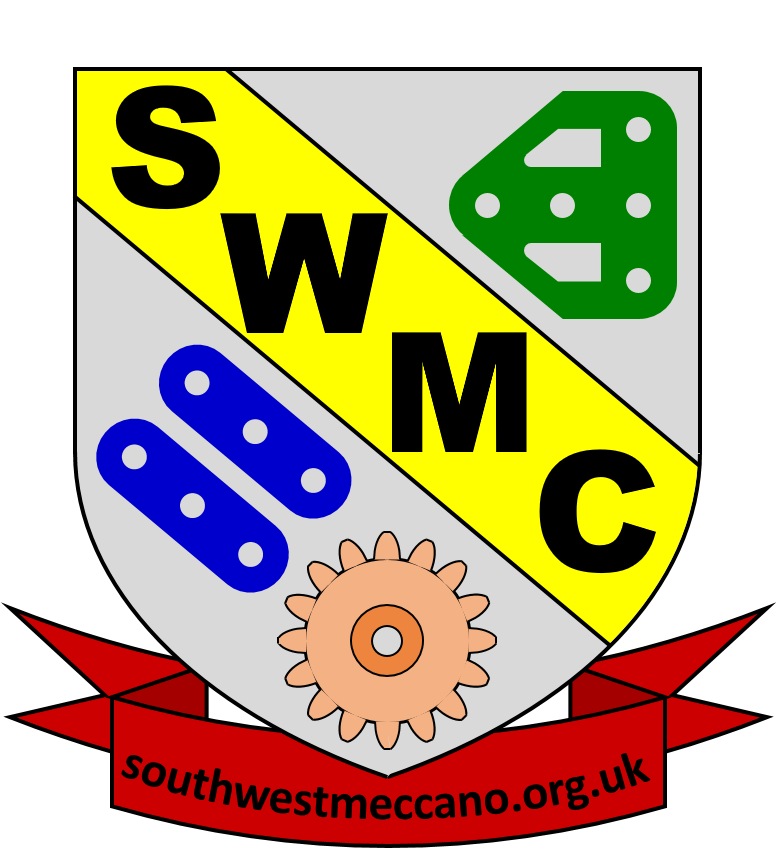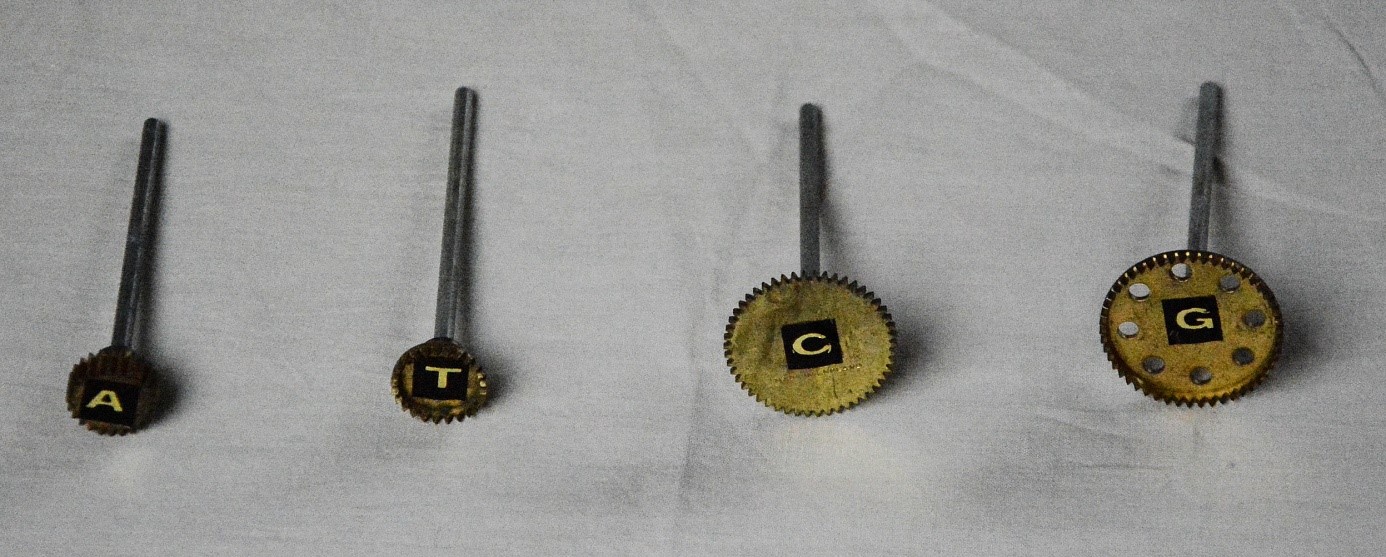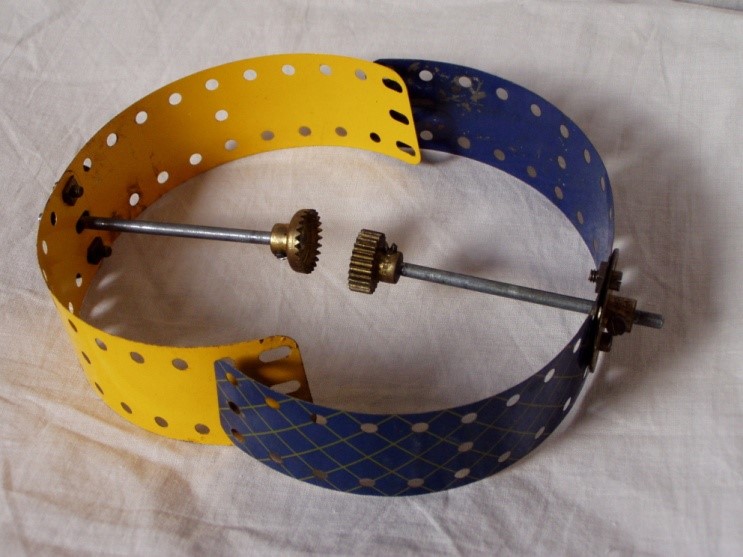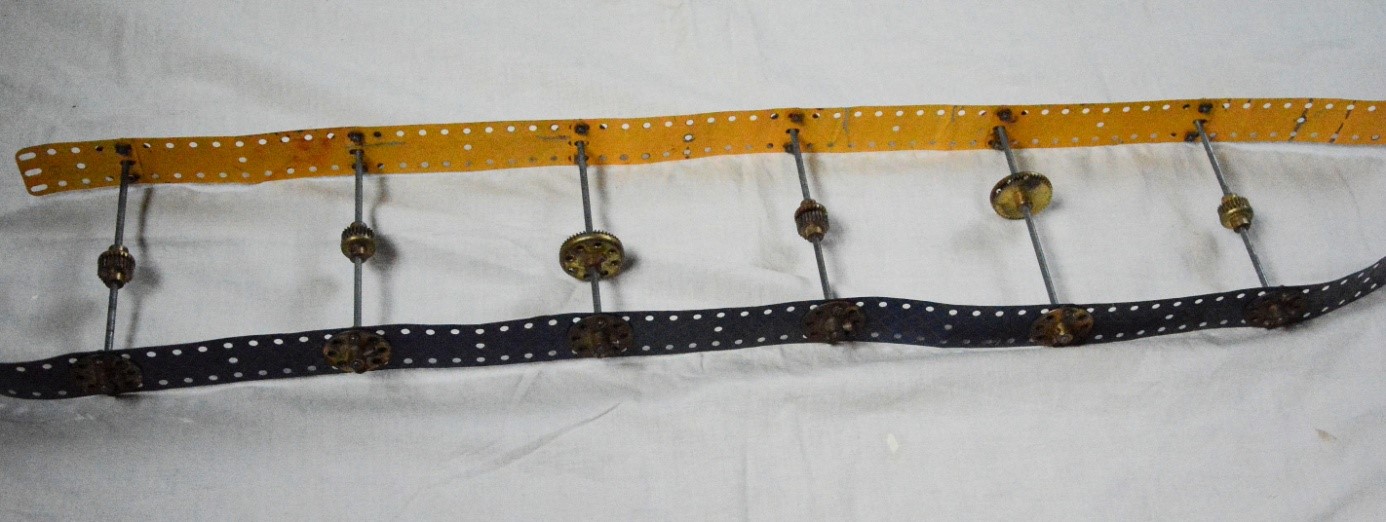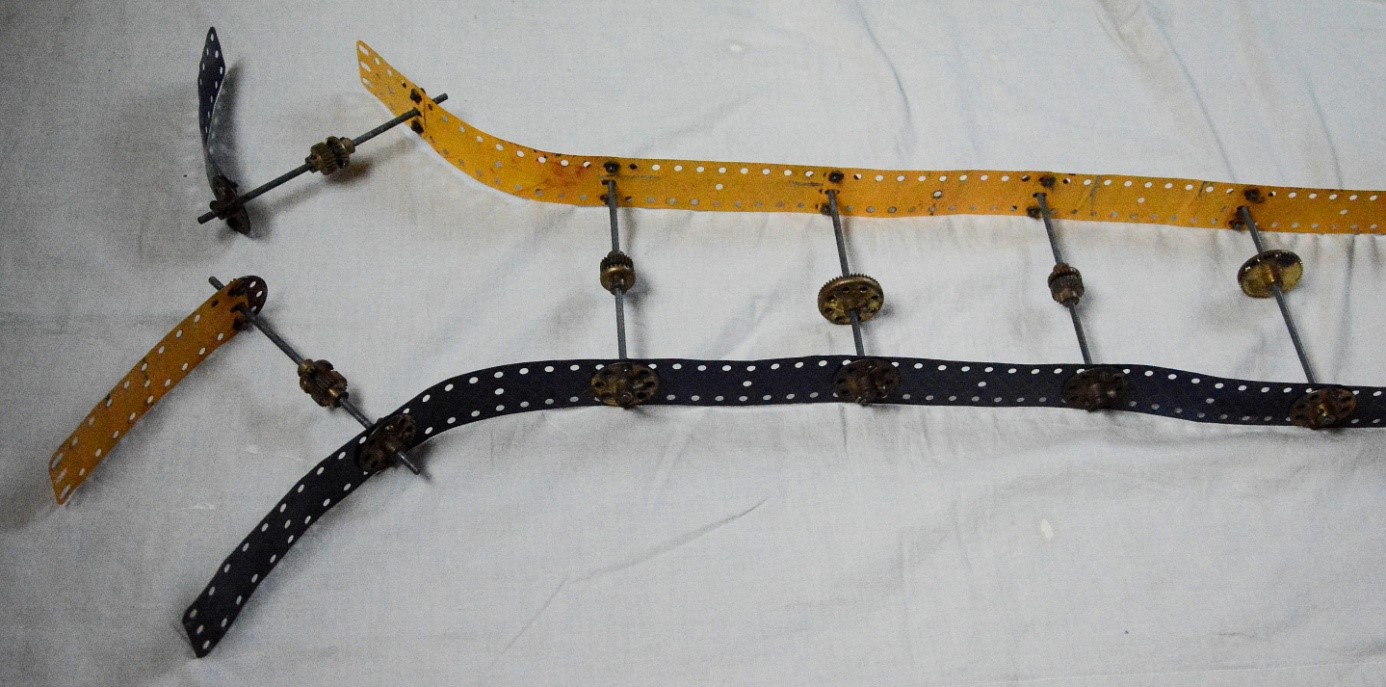DNA is hardly ever out of the news, as new methods of “reading” it and using it to solve crime, investigate archaeology and heredity, and overcome diseases, are continually being discovered. This is because it is the almost universal information and storage and retrieval system for living organisms, enabling instructions for building the body to be passed on from one generation to the next. The reason why it can do this is contained within its structure, initially discovered in Cambridge in 1953 by Watson and Crick. Since Meccano is such a good structural modelling material, I decided to attempt what is, as far as I know, the first representation of it in that medium and use it to explain how it works.
Many people are aware that the shape of the DNA molecule is a double helix. However not so many understand how it carries information in the form of a code, and this is what I wanted to represent. When translated, this code determines the order of amino acids in particular proteins, which in turn determines their structure and the function they perform as building blocks and chemical catalysts in the body.
The code is a sequence of one of 4 chemical units called Bases – Adenine, Guanine, Cytosine and Thymine. These I have represented in the model by 4 types of gears:
These are kept in a particular sequence by being joined to a backbone – in real life alternating sugar and phosphate molecules, but in the model represented by a ribbon of flexible plates:
A particular sequence of 3 bases codes for a particular amino acid in the final protein to be produced, so the same DNA template can be used over and over again to produce many identical protein molecules - like a factory. Thus the above model represents the code for 2 amino acids.
A full molecule of DNA consists of 2 complementary strands or strings of bases; because each base can only pair with one other (A with T, C with G).
The second strand will preserve the same sequence of bases but with the opposite “sense”. This double strand of sequenced bases is represented in the model by the ladder:
Things would have stopped there if the DNA molecule were unable to reproduce itself, known as “replication”. This takes place by the ladder being “unzipped” from one end, and chains matching the exposed bases being started on the bare ends.
The end result of this process is 2 identical DNA strands, each containing half the original one. One of these is moved to the nucleus of each of the two “daughters” of the original dividing cell.
I find this process the most fascinating in all of chemistry and biochemistry. It is what makes life as we know it possible. I personally find it impossible to believe that this could have arisen by pure chance, however many millions of years were allowed, without some form of intelligent design. Would our Meccano model assemble itself, however long you shook the pieces together?
If you are still struggling to understand the structure, I suggest trying to build it; three dimensions can never be properly represented on the page! I hope that others will improve on the model, or be inspired to extend the range of subjects represented further beyond the usual cranes and trains!
This article by Sam Medworth has been accepted for publication in the ISM journal for April 2018.
